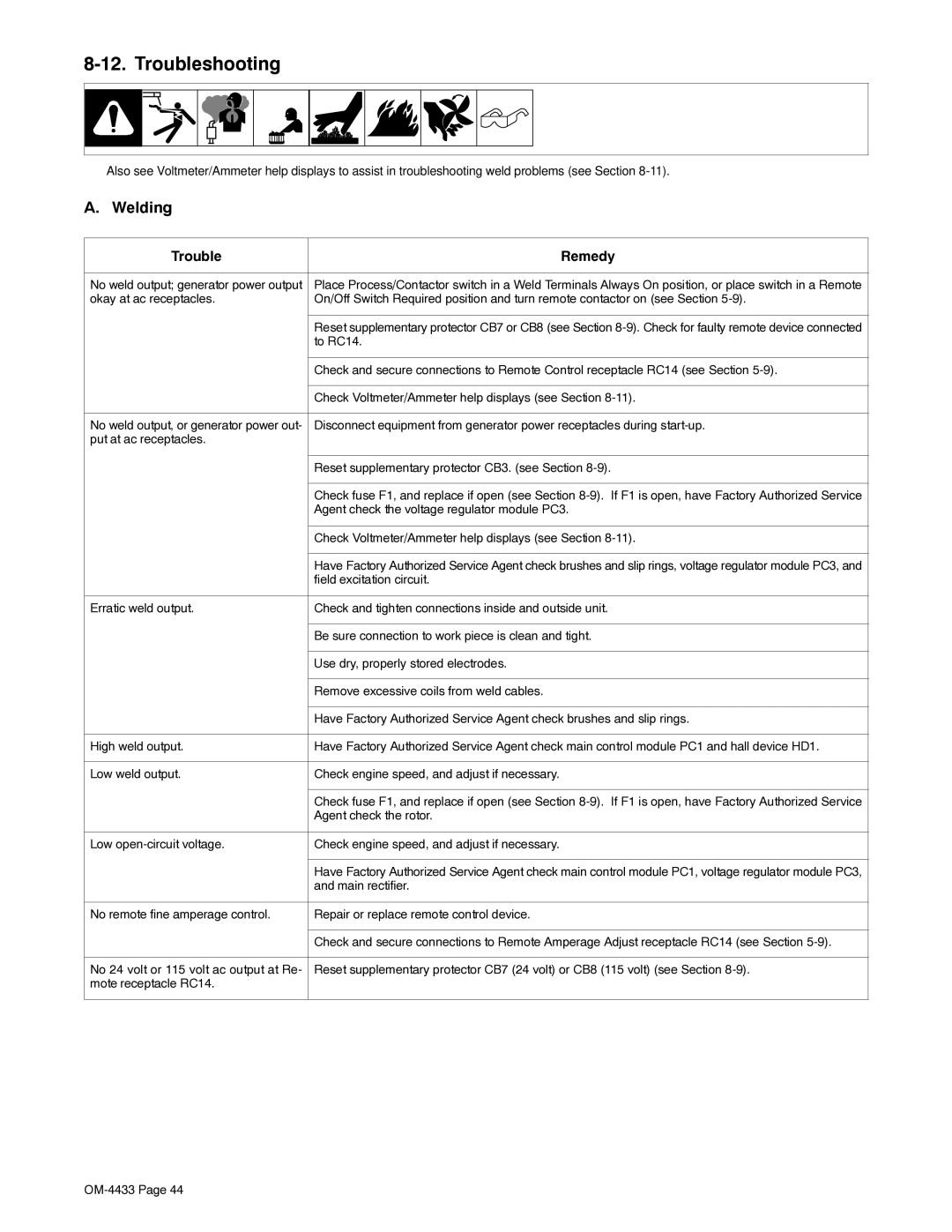Big Blue 300 specifications
The Miller Electric Big Blue 300 is a powerful and versatile engine-driven welder that has become a popular choice for professionals in various industries. Designed to excel in both welding and generator applications, the Big Blue 300 provides reliable performance, advanced technology, and exceptional durability, making it suitable for demanding work environments.One of the standout features of the Big Blue 300 is its impressive output capabilities. With a maximum welding output of 300 amps, this machine can handle a wide range of welding applications, from stick to TIG and MIG processes. The dual voltage output allows for versatility in the field, accommodating both 120V and 240V power requirements, ensuring you can power tools and equipment directly from the welder.
The Big Blue 300 is equipped with Miller's innovative Clean Air Technology, which ensures that the engine operates efficiently and produces fewer emissions. This feature not only meets environmental standards but also enhances the longevity of the machine. The cooling system is engineered to maintain optimal operating temperatures, extending the life of the engine and related components.
For ease of use, the Big Blue 300 features an intuitive control panel with easy-to-read gauges and simple adjustment settings, allowing operators to quickly set welding parameters. The built-in Fuel Gauge and Hour Meter provide real-time information about fuel levels and usage, enabling efficient operation and maintenance planning.
Another notable characteristic of the Big Blue 300 is its rugged construction. Built to withstand harsh job site conditions, the machine features a durable frame and heavy-duty components that can endure the rigors of everyday use. The oversized wheels and solid axle design enhance portability, making it easy to transport across various terrains.
Additionally, the Big Blue 300 is designed for quiet operation, making it suitable for locations where noise levels are a concern. Its low decibel rating ensures that it won’t disturb the work environment, contributing to a more comfortable and productive atmosphere.
Overall, the Miller Electric Big Blue 300 is a robust engine-driven welder that combines power, efficiency, and portability. Whether working on construction sites, maintenance tasks, or fabrication projects, this machine delivers exceptional performance and reliability, making it a valuable tool for professionals who demand the best in their equipment.

